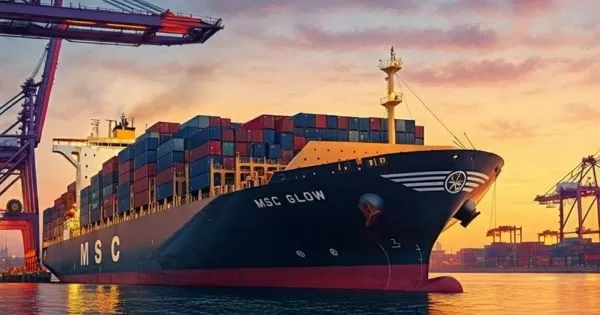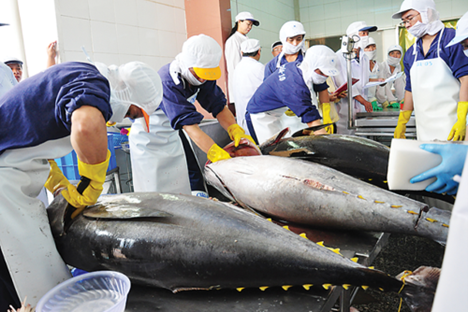Lower capacity and rising demand push up rates on the Atlantic trade
Container freight rates on the Atlantic trade route rose due to capacity shortages and rising cargo volumes, amid concerns about an impending strike at a US East Coast port and post-election trade policy uncertainty.

Uncertainty is affecting the Atlantic trade as election debates heat up and we approach a deadline for workers and terminal operators on the US East Coast to reach a contract agreement.
Atlantic rates have been volatile this year as shippers seek to avoid the worst impacts of the Red Sea diversion, which has shifted capacity from the Atlantic to both the Pacific and Asia/Europe.
The impact of the Red Sea diversion on the Atlantic trade has been seen immediately, with rates from the Mediterranean rising from under $1,500/FEU to nearly $2,250/FEU in February this year. And a similar impact was seen in North European rates, which jumped from $1,875/FEU to $2,250/FEU in the same month, according to Xeneta data.
Currently, the freight rate for exports from Northern Europe to the US is $2,750 per FEU and from the Mediterranean is $2,250 per FEU, up 64.68% and 43.73% year-on-year, respectively, Xeneta said.
However, Atlantic volumes have had little impact on freight rates, according to Container Trade Statistics (CTS) CEO Nigel Pusey: “US, Canadian and European Atlantic volumes remain flat and largely unaffected by the Red Sea conflict – freight volumes and rates have shown little impact from the general container shortage in other geographies.”
However, the increase in cargo volumes cannot explain all of these price increases, with North American exports, including the US and Canada, rising 12.39%, or 113,180 TEU, in the seven months to July 2024, to 1.026 million TEU, compared with 912,894 TEU in the same period last year, according to data from CTS.
Meanwhile, North American imports rose 5% from 2.079 million TEU to 2.183 million TEU, up 103,786 TEU in the same period, CTS said.
In part, the changes in rates are attributed to the early arrival of the peak season, but there has also been an increase in the introduction of more vessels, led by Ocean Alliance.
French carrier CMA CGM has five Atlantic services by mid-2023, three in the alliance, all to the US, with 15 vessels totaling 83,000 TEU. By mid-2024, that number will have dropped to four services, three in the alliance to the US, with eight vessels totaling 55,000 TEU.
Its alliance partner Evergreen has not operated a vessel on the Atlantic since July, when the Ever Living was withdrawn and joined services in Asia, and is not expected to return to the Atlantic until November 1.
MDS Transmodal data shows Evergreen currently has no vessels on the trade lane, but does offer US East Coast services through its Ocean Alliance partners. Evergreen and CMA CGM are not alone in shifting capacity away from the Atlantic trade lanes, with MDS Transmodal statistics showing total capacity down 18.6% year-on-year, to 872,630 TEUs, from 1,071,537 TEUs.
Interestingly, CMA CGM’s redeployments have been largely to the Pacific, where the carrier’s deployed capacity has increased by 5%, compared to just 0.7% on the Asia/Europe trade.
Concerns now turn to October 1, when East Coast dockworkers are expected to strike if negotiations with employers break down.
The National Retail Federation/Hackett Associates Global Port Tracker forecasts imports into the United States to rise 14% year-over-year in September to 2.3 million TEU, Wadey reported, as shippers bring in cargo early.
He said this was largely driven by imports from Asia, although transatlantic shipments, dominated by European exports, will play a supporting role.
“There’s no doubt that carriers will have contingency plans [to maintain service] – a plan in place if you will,” he added.
Meanwhile, Xeneta chief analyst Peter Sand warned that “everyone who does business with the United States should be nervous,” following Tuesday’s election debate between Donald Trump and Kamala Harris.
Tariffs would increase by 20% across the board if Trump wins, and by 60% to 100% on goods exported from China.
However, Sand also points to a Biden/Harris administration that has maintained the tariffs Trump imposed during his first term, and there is no expectation that those trade barriers will be lifted, or that a Harris presidency will not increase protectionism through these import tariffs.
According to Xeneta, who believes that tariffs under Harris will be “different,” it is this kind of uncertainty that is killing trade, “The fact that we don’t know what tariffs to expect creates uncertainty,” Sand said, and means “everyone doing business with the United States should be nervous.”
Source: Phaata.com (According to Container-News)






